40 years of MOMIX
- Oops!Something went wrong.Please try again later.
- Oops!Something went wrong.Please try again later.
I had intended to begin a series of articles this week about musicians and writers who will be coming to Knoxville at the end of March for the Big Ears Festival, but I got distracted.
By MOMIX.
And time travel.
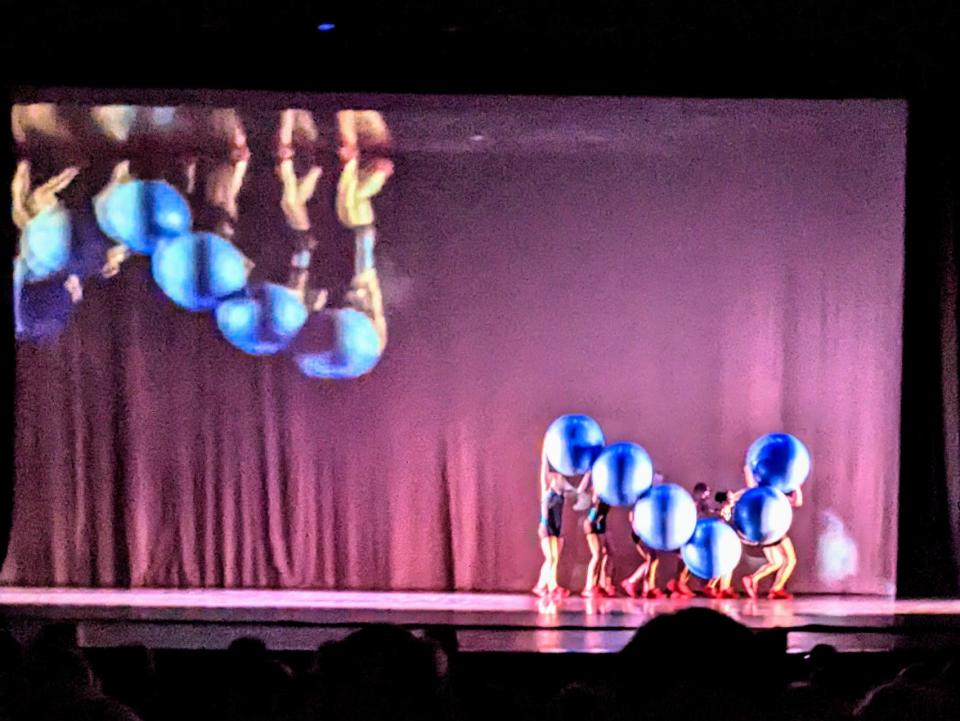
MOMIX is one of the most successful and long-lived stage shows in America. They have inspired two generations of dance innovators around the world, most notably Canada's Cirque de Soleil.
The first time I saw the word MOMIX, it was in a review of the Lake Placid Olympics arts festival performances in Plattsburg, New York in 1980. A big hit of what the New York Times called “the most in-depth arts festival that’s ever been done in the United States,” was Pilobolus Dance Theater’s six dancer/athletes. “Momix” was the title of an improvised solo in the Pilobolus show by Moses Pendleton, one of the group’s co-founders.
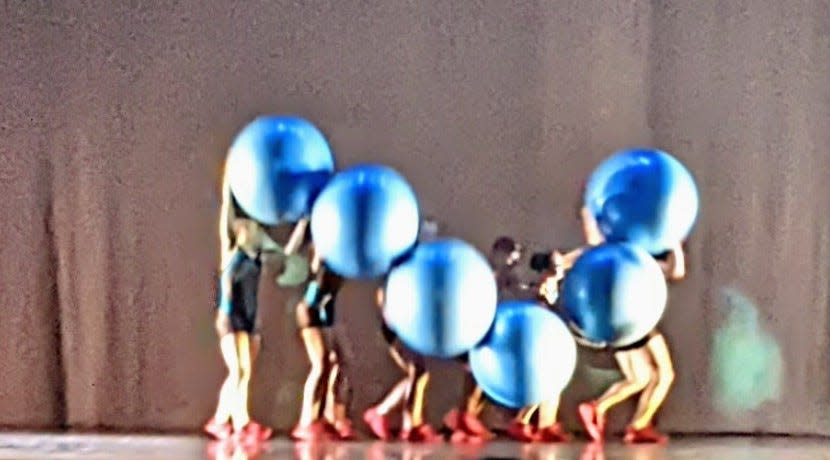
These were the Olympics of the “Miracle on Ice” US vs USSR hockey face-off and speed skater Eric Heiden’s five gold medals. But in Plattsburg, the famously collaborative and creative Pilobolus was showing signs of fracturing after nearly a decade of international fame since the company started as a collegiate lark at Dartmouth. And “Momix” was Pendleton’s declaration that he needed a new outlet.
At the time, I was working in New York City at the Public Theater, where I stayed busy writing the theater’s grant proposals to foundations and the National Endowment for the Arts. I was pretty good at it, and the manager of Pilobolus had come to the Public before the Olympics to pick my brain about how they could become a non-profit entity.
I had hoped to cross paths professionally with Pilobolus for a long time. By sheer coincidence, I had seen an outdoor performance by the group in Cambridge in their first year, and for all of the 1970s I saw them at least once a year. I just thought I should be part of what they were doing, that I could contribute somehow.
At the end of 1980, Pendleton announced he was leaving the group. He and Alison Chase, whose dance classes at Dartmouth had given rise to Pilobolus, decided to perform as a duo called Momix Dance Theater. Pilobolus is the name of a fungus that grows on cow dung. Momix was a milk-based feed supplement for calving Holsteins that Pendleton had grown up using on his family’s dairy farm in Vermont. And as this cycle of life made itself clear to me, I was asked to come to the group’s rural Connecticut base in Washington Depot to help separate the feed from the fungus.
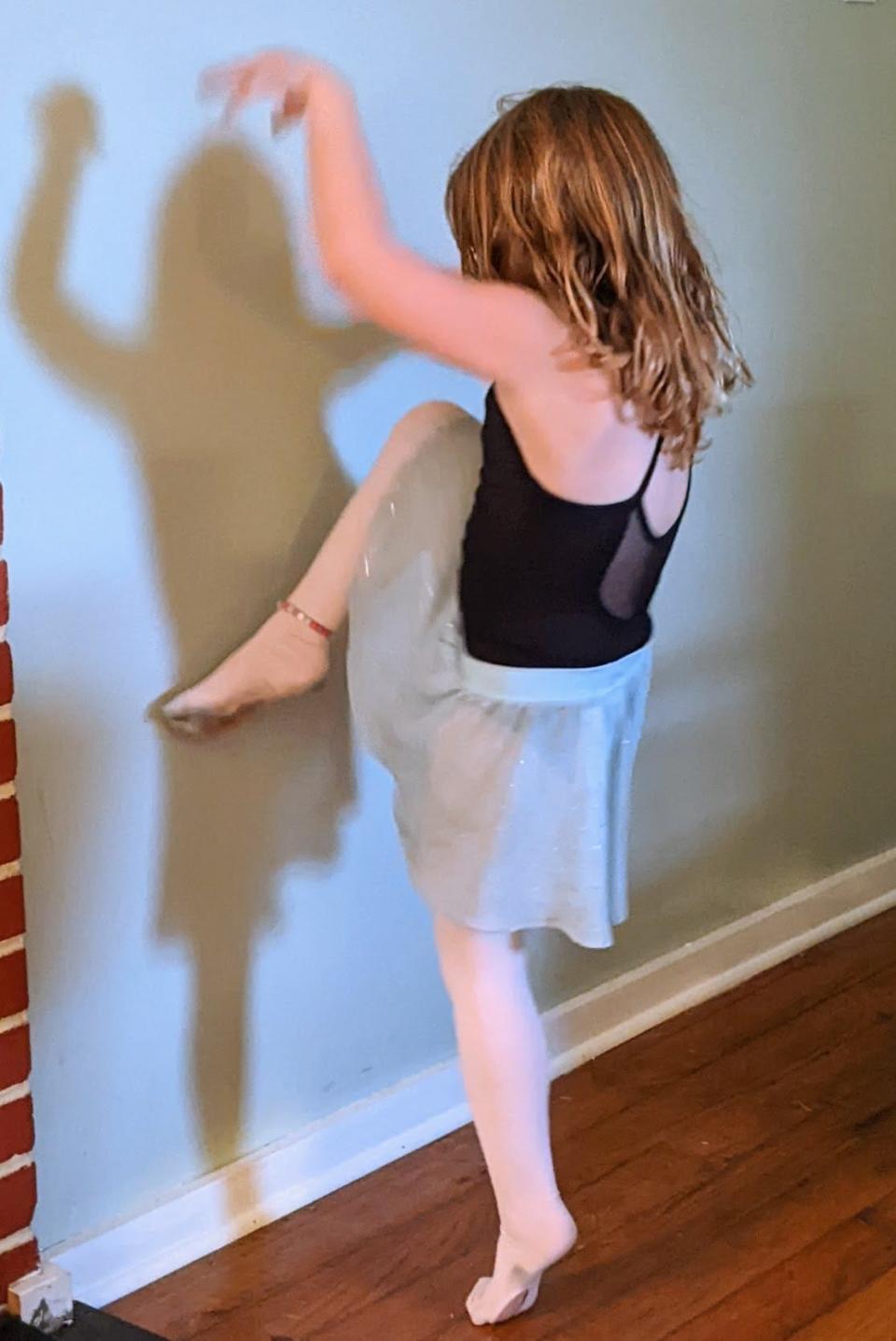
The summer of 1981 was a whole new world for me. The Momix duo had a string of engagements in Europe, in which Pendleton and Chase performed solos and duets they had created in Pilobolus. Pilobolus needed to permanently replace four of its original six members. Pendleton had to fulfill a full-company commission with Pilobolus for the American Dance Festival at Duke University, an instant classic called “Day Two.” And Momix had to get its act together.
That task took two years. The “Mo & Al” show continued its conquest of Europe, and a nucleus of four young dancers had begun choreographing new ideas with me as the technical director and lighting designer, both skills I had developed at the Oak Ridge Playhouse and Masquers during high school.
When Moses decided he had had enough of performing, the door swung open wide for Danny Ezralow, Ashley Roland, Jamey Hampton, Morleigh Steinberg and me to make Momix whatever we dreamt it could be. We dreamt it could be independent, self-producing, and totally free, something no other dance company had the will to attempt.
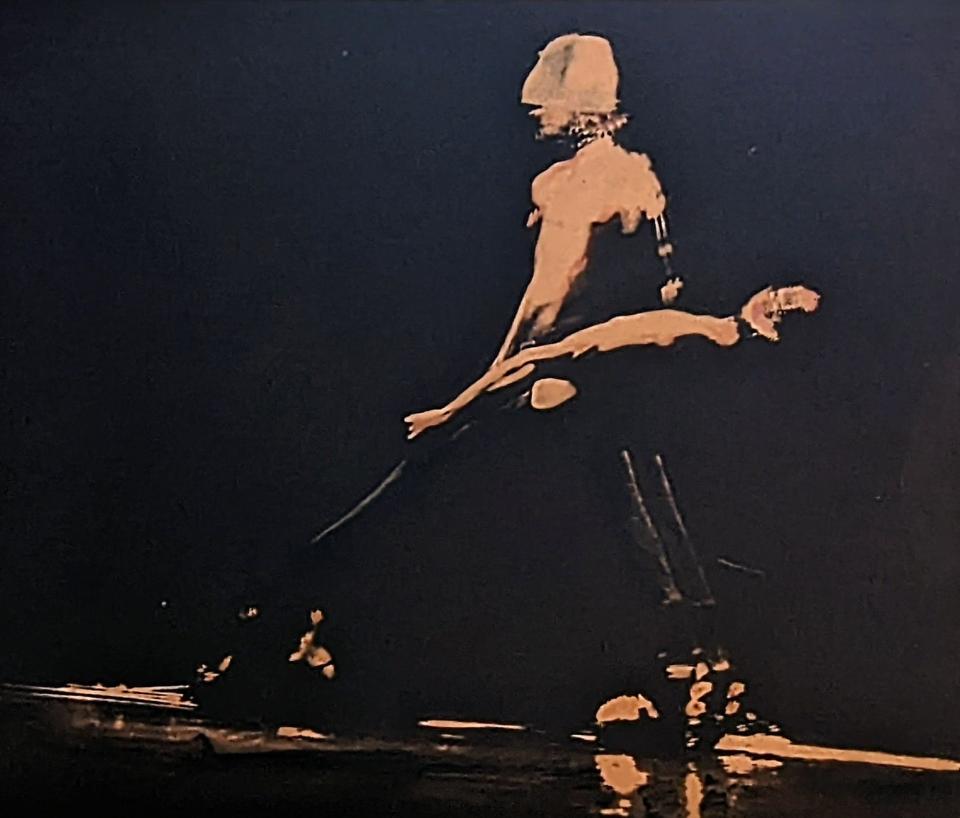
I suddenly found myself in need of letterhead stationery to conduct the company’s business affairs. I found a type font that seemed friendly and spelled out our name in all caps in the upper left corner, in crimson red on a cream colored linen paper. And from then on, MOMIX has always been an upper case noun.
When you spin off from a tornado like Pilobolus, which had made a name for itself by performing nonstop around the world, on Broadway, and on television with PBS’s “Dance in America,” you hit the ground doing 100 mph. And that’s just what we did. After a few under-the-radar shows in Woodstock, New York and in East Village venues in New York City, we booked a two-month tour of performances in Italy and France, prefaced by a trial-by-fire gig at Princeton University. When we came home, we had our official U.S. debut, a -five-minute piece performed at Carnegie Hall in a special tribute to Charles Mingus called “A Night of Genius.”
And we were just getting started.
What set MOMIX apart from the rest of the dance world was a pronounced athleticism married to an informed sense of humor, conveyed with a technical mastery of theater mechanics which, to the audience, was pure magic. This was when our show was completely analog. Nothing electronic about it. I ran all the lighting with manual dimmer boards and the sound with an AMPEX reel-to-reel. In a few instances, I even used a record player and 12-inch vinyl LPs spinning at the wrong speed.
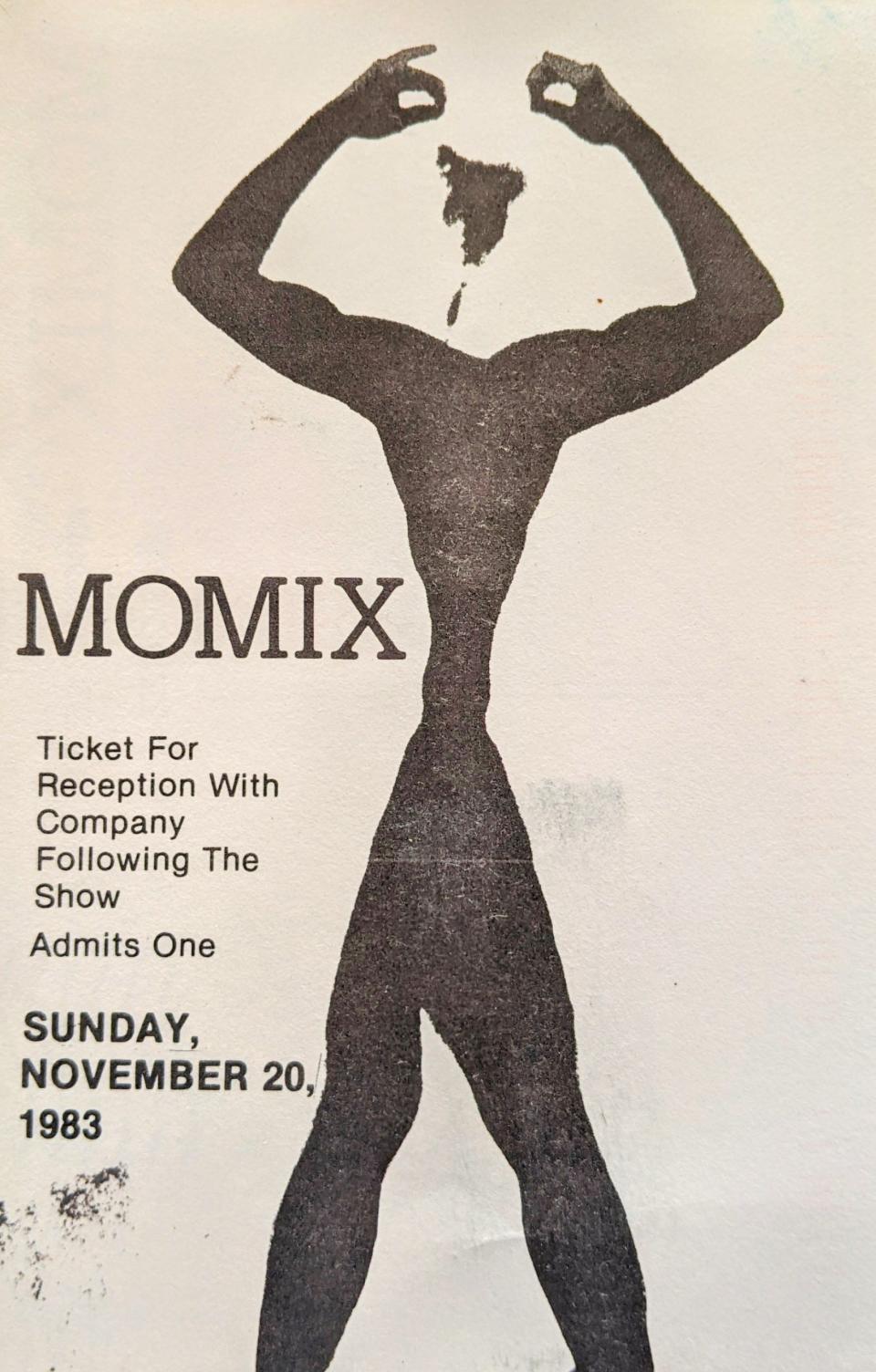
MOMIX’s signature was a 20-minute silhouette piece I developed with a rear projection screen and a pair of Kodak slide projectors. The piece took advantage of a simple optical quirk that produced shadows that were downright hallucinogenic, eliciting gasps and laughter that left audiences yelling for more, whether we were in Berlin or Berkeley, Tokyo or Toledo, Jerusalem or New Jersey.
Forty years after our debut at Carnegie Hall, an image from that silhouette piece is still the logo of MOMIX.
I left the group after two years of constant travelling to try a new life in Texas, when the touring started to feel repetitive. Our initial commitment was to never do the same show twice, to stay inventive, to improvise and take risks. All that comes at a high price, and all five of us in the original MOMIX took different directions in 1986. That left Moses Pendleton with another international reputation to maintain, but no company to do it with.
Jamey Hampton and Ashley Roland got married and started their own company called BodyVox in Portland, Oregon. BodyVox owns its own theater in the Pearl District, which is a beehive of creativity and resilience. Danny Ezralow has his own company in Los Angeles. His work has been seen by billions of people: he has choreographed the opening and closing ceremonies of more Olympics than anyone else I know. And Morleigh Steinberg is immortalized in U2’s song “She Moves in Mysterious Ways.” She’s also married to David Evans, U2’s guitarist known as The Edge. Morleigh heads an art film production company called Arcane Collective.
Pendleton’s answer to being director of MOMIX again was to package techniques, imagery, and ideas from previous work into themed shows. First there was “Baseball.” Then came “Passion,” “Lunar Sea,” “Opus Cactus,” “Botanica,” “Alchemia,” “Viva Momix,” “Momix Forever,” and the most recent production, “Alice,” loosely based on "Alice in Wonderland." The company currently consists of 15 dancers and a running crew of five.
The last time I saw a MOMIX show was 37 years ago - until last week. Last Wednesday they showed up at the Clayton Center for the Arts at Maryville College, fresh off a tour to Israel. I took my three kids, who finally got to see for themselves what I have tried to describe to them their whole lives. I think they were most impressed by the fact that we didn’t have to buy tickets and we got the best seats in the house. They also enjoyed the two hours we spent in the theater before the show, watching the company warm up on stage and talking to their tech director, who has been in charge of the various shows for 20 years.
My five-year-old daughter’s pre-show dancing in the empty aisles was the most magical thing I saw that night.
MOMIX Forever. Yeah, maybe.
John Job is a longtime Oak Ridge resident and frequent contributor to The Oak Ridger.
This article originally appeared on Oakridger: 40 years of MOMIX

